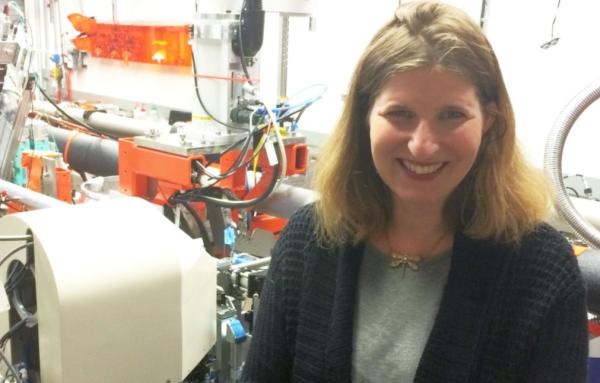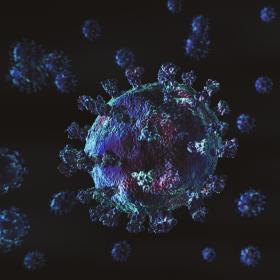DOE awards a SLAC-led research team $12 million to help improve response time to dangerous pathogens
They aim to help society respond ten times faster with treatments for future disease outbreaks.
By David Krause
Researchers with the Department of Energy’s SLAC National Accelerator Laboratory and other institutions have been awarded $12 million in funding to help accelerate society’s response to emerging pathogens by improving X-ray science technology and processes.
The award is part of the DOE’s Biopreparedness Research Virtual Environment (BRaVE) initiative, which will support national preparedness for future pathogens and diseases. In total, the DOE announced about $112 million in funding for 10 research projects.
The SLAC team will be led by Aina Cohen, division head of Structural Molecular Biology at the Stanford Synchrotron Radiation Lightsource (SSRL). Partner institutions include the DOE's Pacific Northwest National Laboratory, the La Jolla Institute for Immunology, and UC Merced, among others.
Aina Cohen
(Aina Cohen)

During the COVID-19 pandemic, SSRL supported 49 COVID-related projects, leading to multiple therapeutics in clinical trials. While the response to COVID-19 led to life-saving vaccines and treatments at an unprecedented pace, over a million people died in the U.S. before the majority of these were distributed. To prevent widespread illness from future diseases, the researchers want society to be able to respond 10 times faster to outbreaks.
The team will develop new technologies to help scientists better understand biomolecular interactions that lead to pathogenesis; accelerate development of new drugs, vaccines, and therapeutics; and apply machine-learning approaches that streamline complex biomolecular research processes.
Additionally, they plan to fully automate a processes at SSRL called macromolecular crystallography. Macromolecular crystallography is a key technique that allows scientists to map a virus’s biological structures and antibody-antigen and protein-compound interactions. The team will also identify critical molecules that could help develop viral inhibitors. As part of this effort, a second technique called X-ray absorption spectroscopy will be used at SSRL to screen molecules for interactions with metal-containing viral structures. All of these goals together will expedite drug design for a larger community and target a wider range of pathogens.
BRaVE builds on the DOE’s National Virtual Biotechnology Laboratory (NVBL) that contributed to the fight against COVID-19, the DOE said.
SSRL is a DOE Office of Science user facility. The Structural Molecular Biology program is supported by the DOE Office of Biological and Environmental Research and the National Institutes of Health, National Institute of General Medical Sciences.
For questions or comments, contact the SLAC Office of Communications at communications@slac.stanford.edu.
About SLAC
SLAC National Accelerator Laboratory explores how the universe works at the biggest, smallest and fastest scales and invents powerful tools used by researchers around the globe. As world leaders in ultrafast science and bold explorers of the physics of the universe, we forge new ground in understanding our origins and building a healthier and more sustainable future. Our discovery and innovation help develop new materials and chemical processes and open unprecedented views of the cosmos and life’s most delicate machinery. Building on more than 60 years of visionary research, we help shape the future by advancing areas such as quantum technology, scientific computing and the development of next-generation accelerators.
SLAC is operated by Stanford University for the U.S. Department of Energy’s Office of Science. The Office of Science is the single largest supporter of basic research in the physical sciences in the United States and is working to address some of the most pressing challenges of our time.





